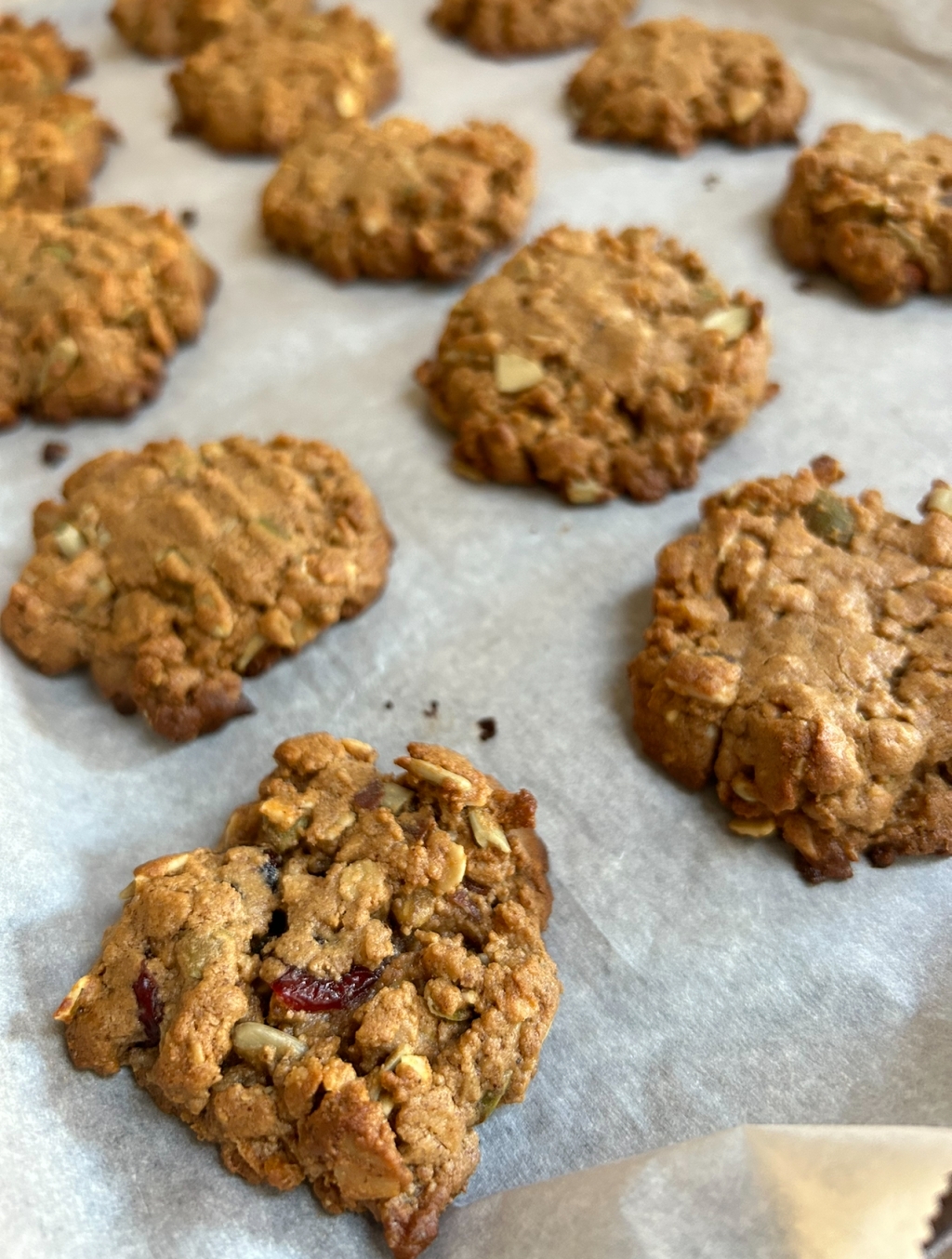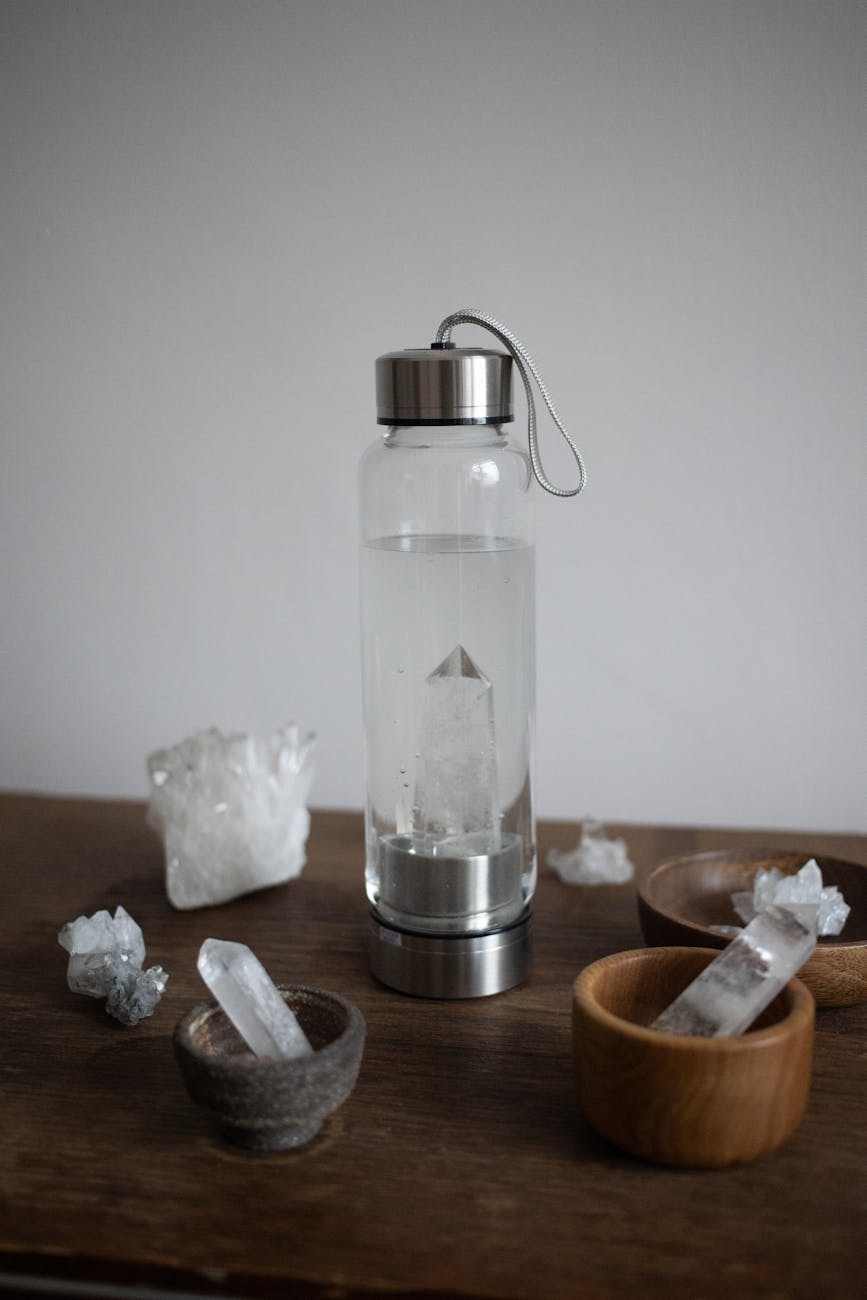From stubborn weight loss plateaus to dry vajay-jays Who knew that such a natural period in life could cause such disturbances? Historically, symptoms of “the change”, also known as menopause, didn’t affect women as severely as it does today.
Menopause is defined as the natural cessation of menstruation that usually occurs between the ages of 45 and 55. In other words, when a woman has not had a period for 12 consecutive months, she is in menopause. Her ovaries stop releasing eggs to be fertilized, so her reproductive years come to an end. The end of the menses can also be induced by surgery and can be the result of medical conditions.
The decade or so leading up to menopause, known as perimenopause, often starts in the late 30’s or early 40’s, and can feel like a hormonal rollercoaster for some women. There are surges in estrogen, paired with progesterone lows, and vice versa. Despite not changing the way we eat or exercise, many women become carb sensitive and report a stubborn mid-section middle that won’t budge.

Typical symptoms are mostly ones that we can control through diet and lifestyle. Although menopause is associated with estrogen, other hormones play a big role in how strong our symptoms are. Typical symptoms that women feel during menopause and the years leading up to it are
- Difficulty sleeping
- Night sweats
- Joint pain
- Shorter or longer menstrual cycles
- Heavy periods and cramps
- Migraines
- Insulin sensitivity and type 2 diabetes
- Vaginal dryness
- Low libido
- Body composition/weight gain around the middle
What makes symptoms worse? Regular diets that are high in refined carbohydrates and low in protein and healthy fats, cause insulin receptors to work a little harder. Over time, these receptors don’t work as efficiently and the result is insulin resistance, the primary driver of menopausal weight gain. Food is medicine, and what we eat can either support us or harm us.

Also, stimulants like alcohol, sugar, excess caffeine, even strenuous workouts, caloric restriction, chronic stress, and chemicals in our cosmetics, can disrupt our hormonal balance and make symptoms feel worse. It can feel like a vicious cycle when we aren’t sleeping well, rely on caffeine all the next day to get through, then crave sweets or fried, greasy foods to “feel better”. Then, we are up all night again feeling bloated and upset with ourselves for making those choices.
The key to lasting weight loss in menopause is to keep insulin levels low.
Is there a way to make the transition smoother? A few shifts in how, what and when you eat, the type of exercise you do during these years, how you detox and support adrenals can all help in making the typical menopause symptoms feel less intense. You don’t have to wait until menopause to implement these habits. In fact, the sooner you set yourself up by preparing early, the better armed you will be for “the change“.
Intermittent Fasting
To keep insulin working efficiently, yet not overworked, we have to let it do it’s job and then let it rest. A form of intermittent fasting that I use with my clients whose goal is to lose the mid-life middle, is to eat 3 balanced meals a day, with a 5 hour fasting window between each. Then, fast all night during sleep. When insulin is high after a meal, the body isn’t burning stored fat. Snacking, grazing, drinking mid-day lattes, even having a small piece of fruit as an afternoon snack can kick you out of a fasted state and raise insulin levels. When you allow insulin to come down between meals, and your body has digested your latest meal, you tap in to stored fat reserves as a form of fuel until it’s time to eat again. Adding some exercise in during these periods is even more effective and metabolism-boosting.
Eat This
As with any healing protocol, the first step is to eliminate what could be harming you. In the case of peri and menopause, refined carbohydrates are definitely not our friend, especially if they are not paired with healthy fats and protein. For many of us, certain foods could be contributing to inflammation in our body by chronically raising our blood sugar due to insulin resistance, or they are not properly digesting. You might notice that some foods worsen your joint pain, keep you up at night, make you feel bloated, constipated, or cause a skin rash.
It’s also important to make sure your diet contains a variety of foods so you get different nutrients. If you eat the same things all the time, you could be missing a vitamin or mineral which could make losing weight more difficult. To be sure, a blood test can determine what foods will be best for your digestion, gut health, to balance hormones, to top up your enzymes, and keep your metabolism working well.

You can always benefit from adding in calcium-rich foods for bone health, foods to boost liver enzymes to detox every day, healthy fats for hormone production and a healthy brain, lean protein to support satiety and muscle (which we lose during menopause and during weight loss), and phytoestrogens to help support declining estrogen levels. Consult your Doctor before adding in phytoestrogens if you have a history of female cancers. Try adding these foods to your extended menu:
Calcium-rich foods: cheese, yogurt, salmon and sardines with bones, spinach, chickpeas, almonds
Liver-loving foods: garlic, onion, broccoli, brussel sprouts, cabbage, cauliflower, kale, green tea, dandelion greens, lemon, blueberries, legumes, whole grains
Healthy fats: olives, olive oil, avocado, flax, coconut oil, sardines, salmon, hemp heart seeds, nuts
Lean protein: poultry, fatty fish, organic eggs, beans and legumes, quinoa, plain yogurt, nut butter
Phytoestrogens: flax, oats, tofu, edamame, apples, hops, barley, rye, lentils, almonds, kidney beans
Supplements for Sleep & Hormone Balance
Declining estrogen and progesterone can cause sleep disturbances, like sleep apnea, during menopause. According to Dr. Grace Pien in a recent Johns Hopkins Medicine article, “Postmenopausal women are two to three times more likely to have sleep apnea compared with premenopausal women. Before we become menopausal, we’re fairly protected, but the protective effect of hormones seems to be lost with menopause.” Hot flashes are also to blame for several wake ups in the night. A few herbs and supplements that I recommend to my clients wanting to get better quality sleep are: (always check with a medical professional prior to adding in supplements and herbs in case of drug interaction)
- Magnesium Bisglycinate
- Menosmart
- Vitex
- Red clover
- Sage
- Black Cohosh
- Rhodiola
- Passion flower
- Melatonin
- GABA
- Lemon Balm herbal tea
- DIM or I-3-C

Build Muscle
When we start to gain weight during peri and menopause, many women tend to add in more frequent and more intense exercise, only to realize this doesn’t have the effect we hope for. We know that during menopause, the loss of estrogen impacts muscle and bone strength. We also know that swapping those vigorous cardio sessions for lower impact, strength training exercises do a woman’s body good. Building muscle in our 40’s and 50’s helps to boost metabolism, which benefits our weight loss efforts. Putting gentle strain on our bones also strengthens them, reducing our risk for osteoporosis in our later years. Try these exercises at least 3 times each week, alternating with long walks and even a rest day in-between:
- Body weight exercises like squats, taking the stairs two at a time, pushups, and lunges
- Yoga
- Pilates
- Swimming
- Forest walks and incline hikes
- Kettle bells and dumb bells
While you’re building muscle, don’t forget that you will need higher protein, particularly in the meal right after your workout. Aim for apron 1 gram protein per pound of body weight in a day.
Adrenal Support
All the changes that women navigate during the transition into menopause can be stressful. Stress leads to high cortisol, disturbed sleep, cravings, and weight gain. When our body is under stress, all our other systems are suppressed to make way for only thing that matters in the moment – survival. And, one survival mechanism is to pack on the pounds. Our body stores fat to use as energy when we are fighting a tiger (so to speak) and don’t have time to stop to eat. The problem is, we won’t be fighting any tigers any time soon, but the brain perceives all stress as being equal…tiger or no tiger.
There are several ways to nourish our adrenals, from meditation, to forest bathing, deep breathing exercises, self care, healing foods, adaptogens, and supplements. When we can relax our nervous system, we lower our cortisol levels, and release weight. If you have been stalled at a weight loss plateau, despite eating all the salads and taking all the spin classes, try addressing your stress response. These are some of my top choices for herbs and supplements for additional adrenal support:
- Ashwagandha
- B complex with L-theanine
- Probiotic with Holy Basil
- Adrenal Chill
- Magnesium Bisglycinate
- Cordyceps Mushroom Blend
- Vitamin C
- Vitamin D
Make Detoxing a Daily Habit
Rather than hopping on a week long cleanse once in a while, I focus on detoxing daily. As a woman, it’s so important to eliminate the chemicals that build up in our body from the 12+ personal care products we slather on every day, from the pesticides in our food, the pollution in our environment, and the excess hormones that our body uses but then needs to discard. You know you’re detoxing daily when you:
- have formed, regular bowel movements
- pee often because you are drinking at least 2 litres of water every day
- sweat during exercise, steam baths, or saunas
- breathe deeply during meditation
Your detox pathways, from where you eliminate toxins and hormones that no longer serve you, are your skin, lungs, kidneys, colon, and liver. Here are ways to optimize them to make detoxing a daily practice: Need a way to kickstart it all? Consider a 10 day Hello Reset.
- Dry brushing
- Liver Care supplement
- Take a Milk Thistle supplement
- Daily bowel movements are a must
- Add dandelion greens and a detox tea to your daily menu
- Get your heart rate up during exercise so you can sweat it out
- I-3-C supplement for estrogen balance and detox metabolism
- Infrared sauna once a week
- Incorporate the liver-loving foods listed above
- Support elimination by eating a minimum of 25g fibre each day through whole grains, veggies, fruit, beans, or a fibre supplement
- Drink at least 2 litres of water each day
- Clean up your beauty products! Here is a guide to the toxins to avoid

Harmonize Your Bioenergetic Field
Everything is energy, including our thoughts, hormones, joints, skin, nervous system, organs, and all the things at play during menopause. New in the digital wellness space t is a wearable device, called Healy. I use it in my practice remotely with clients to help harmonize energy that could be blocked in certain areas. When energy is blocked, symptoms can feel worse. When energy flows, you are in alignment and can find more ease in your life.
Future medicine will be the medicine of frequencies.
Albert Einstein
When running a program, you can expect up to 500% ATP increase (that’s the energy in your cells), boosted collagen production, and reduced inflammation. Some of the programs I work with often, especially for women in menopause, are Skin Harmony, Hormone Harmony, Joints, Balanced Sleep, Liver Harmony, Weight, Mental Balance Acute, Aging, Connective Tissue, and and Fatty Degeneration.

Most of all, embrace this wonderful transition into the next phase of life. Do your own research on these natural approaches and determine which ones you want to try for additional support in reducing some of the typical symptoms women experience in perimenopause and beyond.








Leave a comment